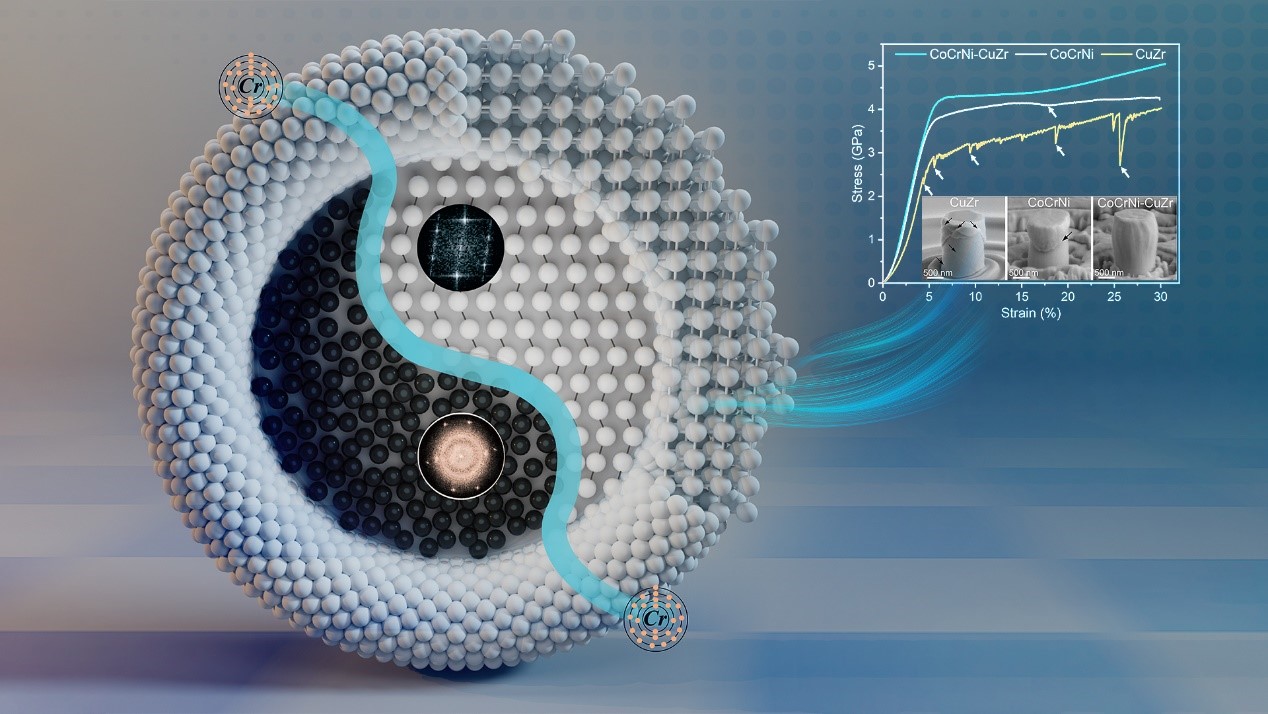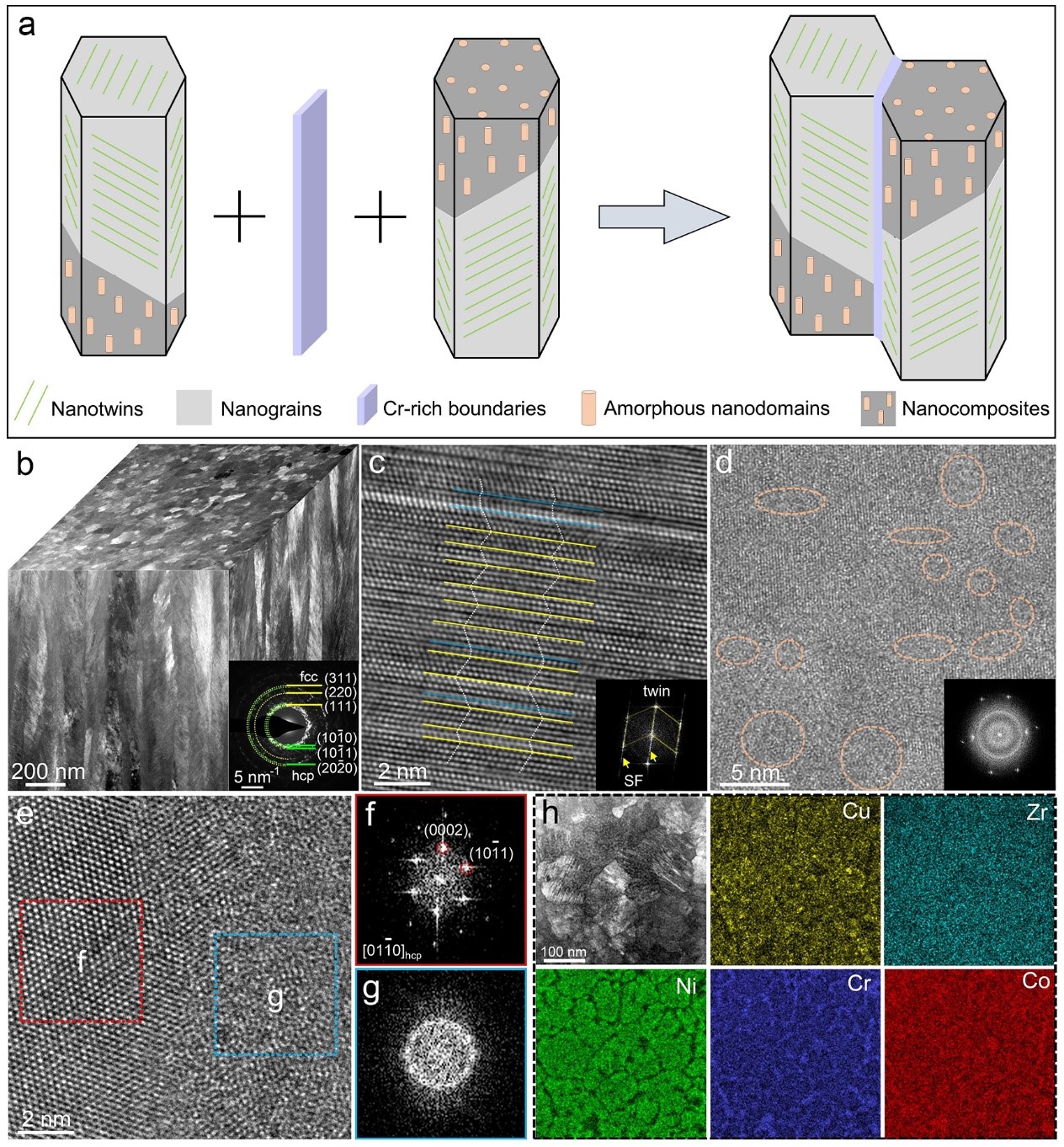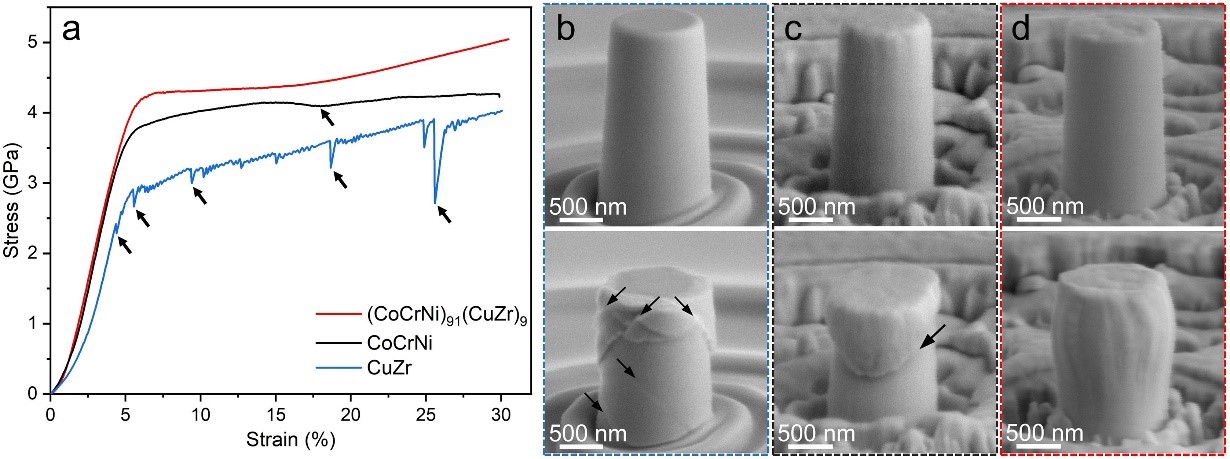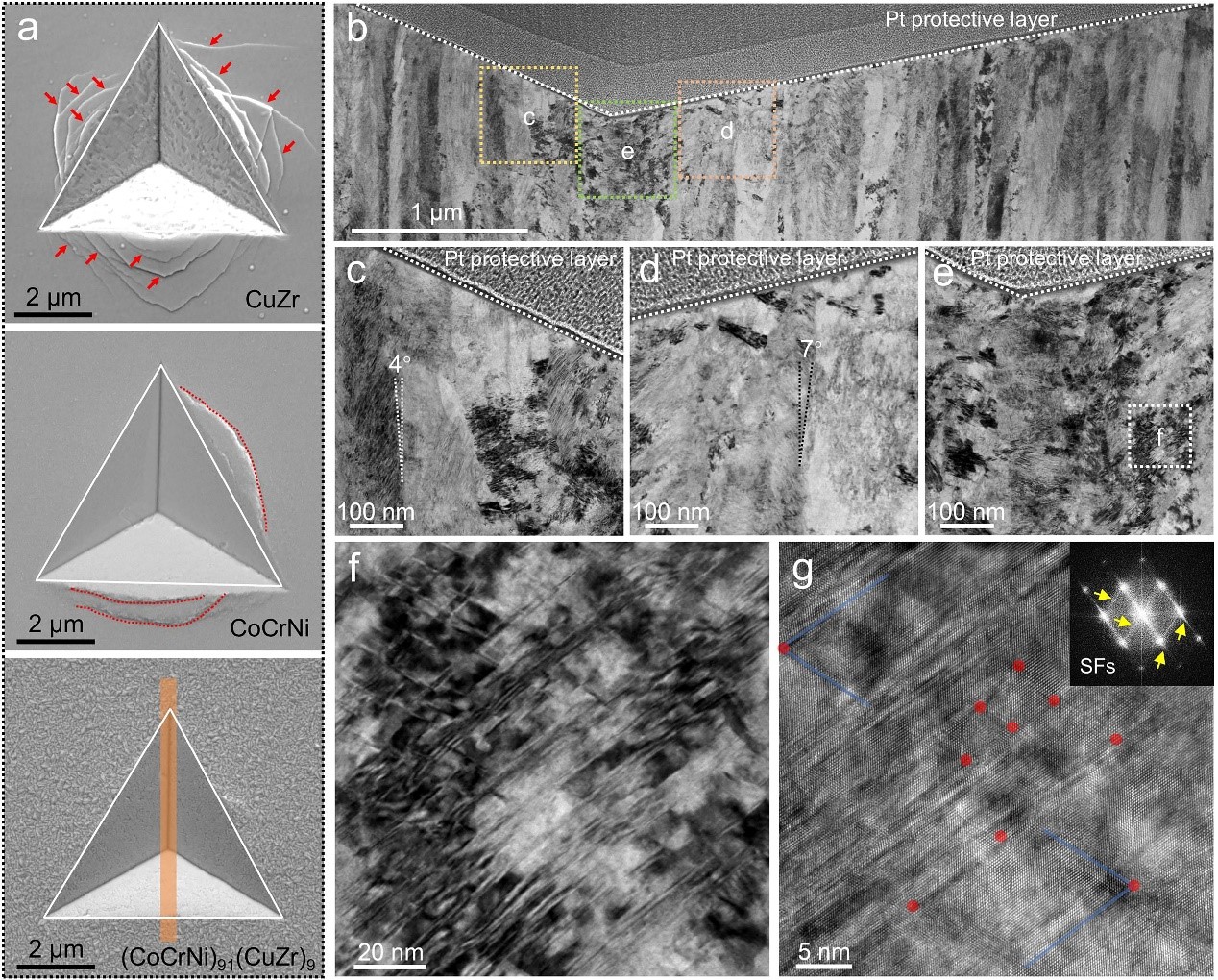Achieving ultra-high strength and uniform plastic deformation in metallic materials remains a significant challenge in the field of material science. While conventional methods like grain refinement and amorphization can strengthen metal materials, these nanostructured materials or metallic glasses often suffer from strain instability, limiting their plastic deformation capabilities.

Professor Fuzeng Ren’s research group from the Department of Materials Science and Engineering at the Southern University of Science and Technology (SUSTech) has introduced a new strategy to synergistically enhance the strength and plasticity of alloys by designing a dual-nano composite structure.
Their research, titled “Dual-Nano Composite Design with Grain Boundary Segregation for Enhanced Strength and Plasticity in CoCrNi-CuZr Thin Films,” has been published in Nano Letters.
The researchers demonstrated that premature strain localization in high-strength nanostructured materials could be effectively suppressed with the combination of high-density nanotwins and an amorphous-nanocrystalline composite structure. Additionally, element segregation at grain boundaries reduces interfacial energy, thereby enhancing deformation stability. By integrating these elements—nanotwins, amorphous-nanocrystalline composite structures, and grain boundary segregation—the team developed a design strategy to enhance the strength and deformation stability of nanostructured materials, achieving a synergistic improvement of both strength and plasticity.
Building on this design, the research group selected a low-stacking-fault-energy alloy as the matrix to promote the formation of high-density nanotwins. They introduced a secondary amorphous phase with positive mixing enthalpy with the matrix elements to induce the development of the amorphous nanodomain and grain boundary element segregation. This led to the construction of a dual-nano composite structure comprising high-density nanotwins and amorphous-nanocrystalline structures with coupled interface segregation, achieving a synergistic enhancement in both strength and plasticity.
The study utilized low-stacking-fault-energy CoCrNi and amorphous CuZr alloy targets, employing magnetron co-sputtering technology to fabricate (CoCrNi)91(CuZr)9 composite films by optimizing sputtering parameters. A systematic investigation of the microstructure, mechanical properties, and deformation mechanisms of these films was conducted.
The results showed that the (CoCrNi)91(CuZr)9 alloy films exhibited a typical columnar nanostructure with an average column width of 67.4 ± 25.7 nm. These films contained an amorphous-nanocrystalline dual-phase structure, with the amorphous phase accounting for approximately 10% of the composition. The crystalline phase consisted of hexagonal close-packed (hcp) and face-centered cubic (fcc) phases, with high-density nanotwins and abundant stacking faults. The average twin spacing was 0.80 nm, and the average diameter of the amorphous nanodomain phase was 3.39 nm. Additionally, significant Cr segregation was observed at the grain boundaries (Figure 1).

Figure 1. Design (a) and microstructure (b-h) of the dual-nano composite (CoCrNi)91(CuZr)9 film
Micro-pillar compression experiments demonstrated that the dual-nano composite (CoCrNi)91(CuZr)9 films exhibited a high yield strength of 4.0 ± 0.2 GPa, representing an 18% improvement over nanocrystalline CoCrNi and a 67% improvement over amorphous CuZr. These results highlight the significant strengthening effects achieved by the researchers. Moreover, the films achieved over 30% uniform deformation, effectively suppressing the strain localization phenomena observed in nanocrystalline CoCrNi and amorphous CuZr (Figure 2).
Based on microstructural analysis and finite element modeling, the group elucidated the deformation mechanism of the dual-nano composite structure. During the loading process, the nanotwin density decreased in the nanocrystalline region while stacking faults increased, leading to the formation of L-C locks through stacking faults interactions. Simultaneously, lateral bending of columnar nanocrystals and Cr enrichment at the grain boundaries occurred in the peripheral region, increasing the volume fraction of interfaces in the central region. This was accompanied by plastic flow in the nanoscale amorphous phase, providing sustained strain hardening.
In this process, high-density nanotwins, columnar interfaces, and amorphous-nanocrystalline interfaces played crucial roles in hindering dislocation motion and dispersing stress uniformly. These features contributed to the enhancement of yield strength and uniform deformation capability, while the Cr-rich interfaces improved deformation stability by reducing interfacial energy (Figure 3).

Figure 2. Mechanical behavior of the as-deposited (CoCrNi)91(CuZr)9, CoCrNi, and CuZr films

Figure 3. Modeling and schematic representation of the mechanical responses of the (CoCrNi)91(CuZr)9 dual-nano composite film
Nanoindentation tests with large indented depth, combined with cross-sectional microstructural analysis, further validated the excellent synergistic deformation capabilities of the dual-nano composite structure (Figure 4). The design strategy developed in this study is expected to be extended to other alloy systems to develop advanced metallic materials with high strength, large plasticity, and sustained strain hardening.

Figure 4. Morphological (a) and microstructural changes (b-g, for (CoCrNi)91(CuZr)9 film) following nanoindentation
This work revealed that introducing a dual-nano composite structure, which integrates high-density nanotwins and amorphous-nanocrystalline composites with element segregation at grain boundaries, effectively mitigates strain localization in high-strength nanostructured materials. It offers a new approach to achieving both high strength and large plasticity in metals.
Ph.D. student Qiming Zhuang and postdoctoral researcher Dingshan Liang from Professor Ren Fuzeng’s research group are the co-first authors of the paper. Professor Fuzeng Ren is the corresponding author, with SUSTech serving as the first and corresponding institution.
Paper link: https://pubs.acs.org/doi/10.1021/acs.nanolett.4c04755
To read all stories about SUSTech science, subscribe to the monthly SUSTech Newsletter.
Proofread ByAdrian Cremin, Yingying XIA
Photo ByDepartment of Materials Science and Engineering